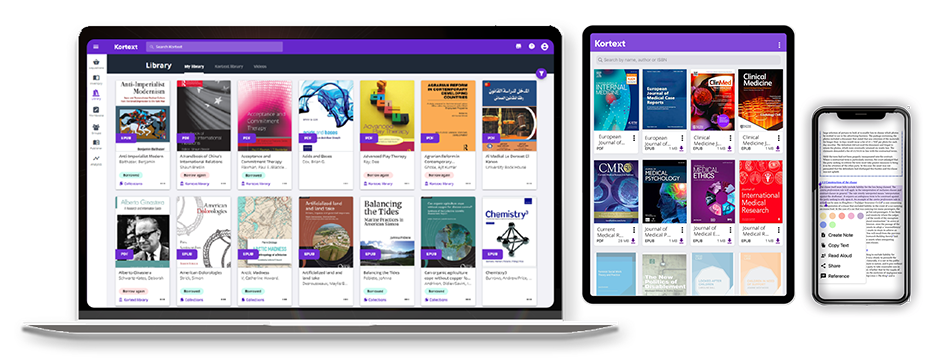Over the last three years, we have seen digital technology weave itself into the rich tapestry of higher education in a way never seen before, but where there is opportunity there is always a level of trepidation – particularly when it comes to the importance of student collaboration. At Kortext, we often hear concerns that students studying either partly or wholly through digital means could feel siloed and lack the important collaborative and cooperative learning skills needed as they emerge into the world of work.
But does a more digitally-enhanced, blended learning experience put a blocker on student collaboration or can institutions use digital tools to their advantage? Let’s start by looking at some of the ways in which effective student collaboration can benefit students’ studies and beyond.
The 5 key benefits of student collaboration:
1. Fostering a sense of belonging
A study carried out by Pearson in 2021 revealed that 31% of UK university students either didn’t feel a sense of belonging at their university or couldn’t say either way. That’s almost a third of students feeling somewhat disconnect with their institution. Overwhelming feedback from students suggests that developing closer and more friendships will help them feel a greater sense of belonging and, as a result, a greater connection with their course – so opportunities to collaborate are key.
2. Driving research and innovation
Particularly for research intensive courses, collaboration is key if students want to make an impact in their field. Understanding the viewpoints of others, providing and receiving feedback, knowledge sharing and debating ideas – these are all crucial when developing research. It’s a collective experience.
The wider use of digital technology such as MS Teams and virtual learning environments that connect students together, wherever they are in the world, can only have a positive impact on research and innovation on a global scale.
3. Enhancing learning outcomes
Working with others presents students with opportunities to gain new perspectives and learn from each other, which can be invaluable. Often a new perspective or an informal discussion with a peer is a great way to piece together the gaps in their knowledge. This results in a deeper understanding of the subject matter and improved learning outcomes – a win for the student and the institution.
4. Preparing students for the world of work
Working with others is a skill that’s learned through doing. Learning to consider and respect the opinions of others; learning to be assertive and back your own ideas; learning to share tasks; developing critical thinking skills; making connections and socialising – all important skills to have in the professional world of work where collaboration and teamwork are essential for success.
5. Encouraging diversity and wider thinking
Bringing together diverse groups from different backgrounds increases exposure to new perspectives and ideas and allows students to gain a wider understanding of a subject outside of their own sphere of knowledge. This fosters a more culturally aware learning environment. And with many students studying abroad or across campuses, connecting through digital technology is an easy and effective way to facilitate education across borders.
The benefits of collaboration are clear, but traditional face-to-face collaboration isn’t the only way to connect students and ideas. In fact, nowadays digital collaboration is becoming the norm. Employers are developing global workforces who connect through systems like MS Teams and social media, working across different continents and time zones.
Kortext’s world-leading eBook and smart study platform, Kortext Arcturus, provides students with a personalised digital bookshelf, giving them access to eTextbooks, open educational resources and educational videos, anytime, anywhere and on any device.

But the Arcturus platform goes far beyond simply supplying digital course books and learning content to universities and their students.
Within the platform, we provide a host of smart study tools to keep students engaged with their course content, including a Groups feature, enabling academics and students to set up digital study groups with other Kortext users.

This gives students the opportunity to build connections with their peers and academics; share ideas and gain new perspectives; and encourages discussion and debate around their course materials, driving those all-important learning outcomes. Facilitating student collaboration across campuses, borders and time zones has never been easier.
We work with university libraries and leadership teams to enhance the student experience across programmes, departments, institutions and even entire countries, with students in over 2,300 universities worldwide using our platform.
To explore other ways in which the Kortext Arcturus eBook and smart study platform can improve student engagement, retention and progression at your institution, get in touch today to book a discovery session with a member of the team or check out our case studies.
Oh, did we mention it’s our 10th anniversary? For a potted history of all things Kortext – from eBook supplier to creator of the world leading eBook and smart study platform – visit our news page.







